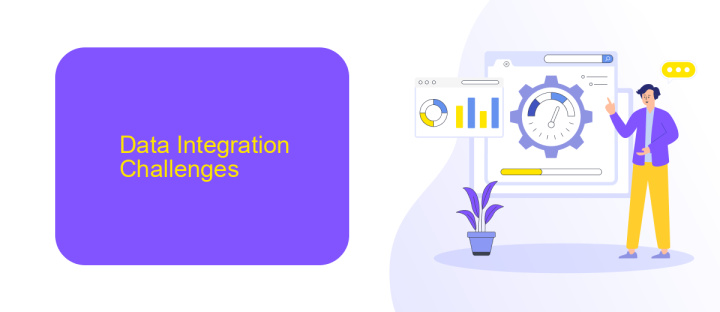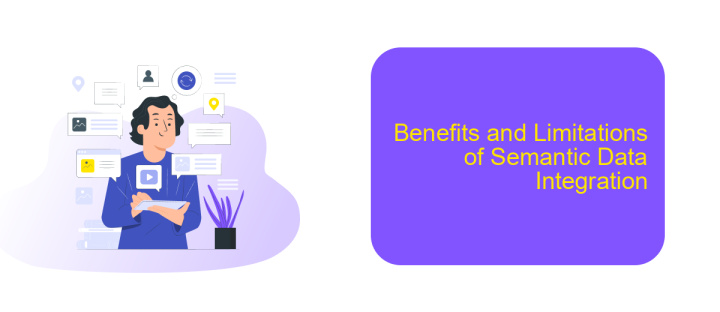Semantic Data Integration
Semantic Data Integration is a transformative approach that enhances the interoperability of data from diverse sources by leveraging semantic technologies. By using standardized vocabularies and ontologies, it ensures data consistency, improves accuracy, and facilitates seamless data exchange. This article explores the principles, methodologies, and benefits of semantic data integration, highlighting its pivotal role in modern data management and decision-making processes.
Introduction
Semantic Data Integration is a crucial process in the realm of data management, aimed at combining data from diverse sources to provide a unified view. It leverages semantic technologies to ensure that the data is not only syntactically but also semantically compatible. This approach enhances data quality, consistency, and accessibility, making it easier for organizations to derive meaningful insights from their data.
- Improved data quality and consistency
- Enhanced data accessibility and interoperability
- Streamlined data integration processes
Tools like ApiX-Drive facilitate semantic data integration by automating the process of connecting various data sources. ApiX-Drive offers a user-friendly interface and robust features that simplify the integration of disparate data systems, ensuring seamless data flow and real-time synchronization. By leveraging such tools, organizations can achieve efficient and effective data integration, ultimately driving better decision-making and operational efficiency.
Data Integration Challenges

Data integration poses several challenges, primarily stemming from the diversity and heterogeneity of data sources. Organizations often deal with data that varies in format, structure, and semantics, making it difficult to achieve seamless integration. Additionally, data quality issues such as inconsistencies, duplicates, and missing values further complicate the integration process. Ensuring that the integrated data maintains its integrity and accuracy is a critical concern that requires robust validation and cleansing mechanisms.
Another significant challenge is the scalability of data integration solutions. As the volume of data grows, traditional methods may struggle to keep up with the increasing demands. Services like ApiX-Drive offer a viable solution by providing automated integration capabilities that can handle large datasets efficiently. ApiX-Drive's platform supports various data sources and formats, enabling organizations to streamline their integration processes. By leveraging such services, businesses can reduce the complexity and time required for data integration, allowing them to focus on deriving actionable insights from their unified data.
Semantic Data Integration Approach

Semantic data integration is a crucial process that aims to merge data from diverse sources while maintaining its meaning and context. This approach enhances data consistency and usability, allowing organizations to derive more accurate and actionable insights. By leveraging semantic technologies, data from different formats and structures can be harmonized, leading to more efficient data management and analysis.
- Identify and map data sources: Assess all available data sources and establish a mapping strategy to align them.
- Utilize semantic models: Implement ontologies and taxonomies to provide a common framework for data integration.
- Data transformation: Convert data into a unified format using semantic rules and guidelines.
- Data linking and enrichment: Enhance data by linking it with external datasets and adding relevant metadata.
- Validation and consistency checks: Ensure the integrated data is accurate and consistent across all sources.
Tools like ApiX-Drive can facilitate the semantic data integration process by automating data extraction, transformation, and loading (ETL) tasks. ApiX-Drive supports the integration of various applications and services, making it easier to synchronize and manage data across different platforms. By utilizing such tools, organizations can streamline their data integration efforts, leading to improved data quality and accessibility.
Benefits and Limitations of Semantic Data Integration

Semantic data integration offers significant advantages by enabling seamless data interoperability across diverse systems. It facilitates more accurate data interpretation, allowing organizations to derive meaningful insights and make informed decisions. By leveraging semantic technologies, data integration becomes more flexible and scalable, accommodating the dynamic nature of modern data ecosystems.
However, this approach is not without its limitations. Implementing semantic data integration can be complex and resource-intensive, requiring specialized knowledge and tools. Additionally, achieving consensus on standardized ontologies and vocabularies can be challenging, potentially leading to inconsistencies and misinterpretations.
- Enhanced data interoperability and accuracy
- Improved scalability and flexibility
- Facilitates better decision-making
- Resource-intensive implementation
- Challenges in standardization
Services like ApiX-Drive can simplify the integration process by providing user-friendly tools and automated workflows. ApiX-Drive allows organizations to connect various applications and data sources seamlessly, reducing the technical burden and ensuring consistent data flow. Despite the challenges, the benefits of semantic data integration make it a valuable approach for modern data management.
Conclusion
In conclusion, semantic data integration stands as a crucial methodology for harmonizing disparate data sources, enabling more coherent and meaningful data analysis. By leveraging semantic technologies, organizations can achieve a unified view of their data, which in turn, enhances decision-making processes and operational efficiency. The challenges associated with semantic data integration, such as data heterogeneity and schema mismatches, can be effectively addressed through advanced algorithms and tools designed to interpret and align semantic meanings across various datasets.
Moreover, the use of integration services like ApiX-Drive significantly simplifies the process of connecting and synchronizing data from multiple platforms. ApiX-Drive offers a user-friendly interface and robust features that automate data integration tasks, making it easier for businesses to maintain data consistency and accuracy. By employing such services, organizations can reduce the complexity and time required for semantic data integration, ultimately leading to more agile and data-driven operations.
FAQ
What is Semantic Data Integration?
Why is Semantic Data Integration important?
How does Semantic Data Integration differ from traditional data integration?
What are the challenges associated with Semantic Data Integration?
How can automation tools help in Semantic Data Integration?
Strive to take your business to the next level, achieve your goals faster and more efficiently? Apix-Drive is your reliable assistant for these tasks. An online service and application connector will help you automate key business processes and get rid of the routine. You and your employees will free up time for important core tasks. Try Apix-Drive features for free to see the effectiveness of the online connector for yourself.

